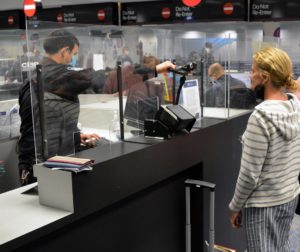 There are numerous roles that go into developing a single software, even if it seems relatively simple from the outside. The product creation process actually involves lots of ideation, testing, design thinking, user research, creative iteration, quality assurance, and whatnot!
There are numerous roles that go into developing a single software, even if it seems relatively simple from the outside. The product creation process actually involves lots of ideation, testing, design thinking, user research, creative iteration, quality assurance, and whatnot!
In this article, we’ll walk you through 3 roles in software development that are absolutely crucial to the product design and development process. Let’s get started!
1. Designers
This shouldn’t come as a surprise to you, but there is no use for a developer if a designer hasn’t already made the product’s blueprint ready. Creating software is a complex process and it isn’t always about aesthetics and pretty designs. A designer needs to focus not only on the appearance of the product, but also on its functionality, accessibility, intuitive design, and many other factors that play a role in software.
This is why designers themselves are usually split into two categories, the UI and UX designers. UI designers are the User Interface designers. They deal with creating the interface that the end-users will be interacting with. Basically, whatever a user sees on his or her screen, whether it’s the color, button size, line spacing, font style, and all the other actions they take on the software, comes under the UI design of the product. If a UI design is termed to be good, it means that users are able to work their way around it and use it effortlessly to accomplish their tasks without much of a learning curve.
However, with bad UI designs, users struggle to navigate their way through the product and are often left feeling confused or annoyed with the interface of the product. With UI design, simplicity and understandability are the key factors that help it gain a customer’s approval.
On the other hand, UX stands for User Experience, and it deals with the overall experience that users feel when they use the product. Though it is indirectly related to the UI of the product, the UX involves a larger context under which the UI also plays a role. User experience refers to the overall experience delivered to the user by the product, right from its branding, values, mission, and UI design.
2. Developers
Here’s where you see your design become a real, working prototype. There are many types of developers, just like there are designers who work in different roles. While some of them focus on developing the interface of the product, others work on the “server-side” of software. At the end of the process, you’ll be able to see a working prototype that’s fully functional, even though it’s not completely perfect as yet.
3. Quality Assurance Engineers
Towards the final stage of the product creation process, we reach the testing phase, where quality assurance engineers test the products to make sure they’re perfect and bug-free for the end-users. If you’d like to know more about the role of QA engineers and how they conduct automation testing, you can read more here.
As a matter of fact, QA engineers don’t come in just in the final stage most of the time, but they’re always involved right from the start where they anticipate and prevent most bugs and major flaws from appearing even in the first place. Towards the end, they focus on perfecting the design and enhancing the quality of the user experience for the end-user. They’re also responsible for making sure that the security of the product is fully functional and there are no loose ends that could potentially lead to other problems in the future.


